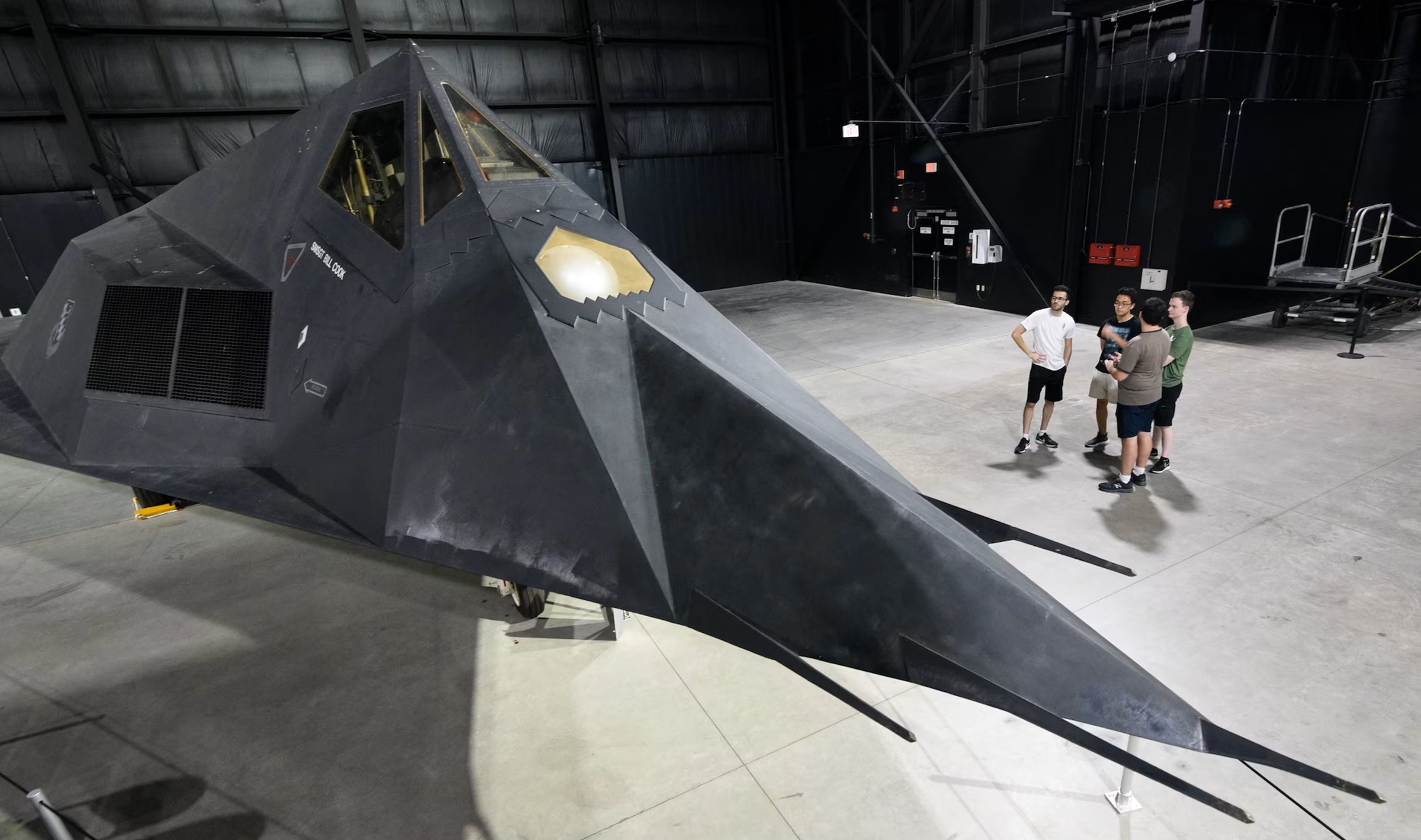The Pentagon office in charge of investigating UFO reports — now known officially as unidentified anomalous phenomena, or UAPs — today provided its most detailed explanation for what it said were false or misconstrued claims of alien visitations over the decades.
The first volume of a historical record report released by the All-domain Anomaly Resolution Office, or AARO, in response to a congressional mandate did include a fresh disclosure: During the 2010s, U.S. government officials considered a proposed program code-named “Kona Blue” that would have looked into the possibility that extraterrestrial technology could be reverse-engineered. But the Department of Homeland Security rejected the idea because it lacked merit, the report said.
“It is critical to note that no extraterrestrial craft or bodies were ever collected — this material was only assumed to exist by Kona Blue advocates and its anticipated contract performers,” according to the report. The same assumptions were made by outside investigators who delved into UAP reports as part of an earlier Pentagon-funded program, AARO said.
One of the investigators involved in that program — which was known as the Advanced Aerospace Weapons System Application Program or the Advanced Aerospace Threat Identification Program (AAWSAP/AATIP) — made clear that he’d continue trying to keep the alien angle in the public eye.
“Today the Pentagon and its current UAP investigative program, AARO, issued a public report that is intentionally dishonest, inaccurate and dangerously misleading,” Lue Elizondo, who helped spark renewed interest in UFO reports in 2017, said in a posting to X / Twitter. “Myself and others who are aware of the truth are going to keep working to help Congress in their efforts to achieve disclosure.”
But Mick West, a retired software engineer who specializes in analyzing UFO/UAP reports, said the newly released report shows how a belief in alien phenomena can be self-reinforcing. “A belief in the supernatural … is what led to the current UFO flap that AARO is trying to pour cold water on,” West said on X / Twitter.
The ups and downs of UFOs
The 63-page report traces government-funded efforts to investigate sightings of unidentified flying objects going back to before the 1947 Roswell UFO incident, which was the subject of a “Case Closed” report on the 50th anniversary in 1997. Pages and pages are devoted to recounting projects that are well-known to the UFO community, including Project Blue Book and the Condon Report.
AARO acknowledged that there was “about a 40-year gap” in official efforts to investigate UAP sightings after Project Blue Book was terminated in 1969. The efforts resumed in earnest in 2009, primarily due to the interest of the late Sen. Harry Reid, a Nevada Democrat who was Senate majority leader at the time.
For several years, the Pentagon’s Defense Intelligence Agency funded the AAWSAP/AATIP’s investigation into anomalous sightings. The review of aerial sightings by military personnel was conducted by Bigelow Aerospace Advanced Space Studies, which was created by Nevada billionaire Robert Bigelow.
When the funding for AAWSAP/AATIP ended in 2012, some of the people who were associated with the project — including Elizondo — continued their work in other roles. They also unsuccessfully tried to persuade the Department of Homeland Security to set up the Kona Blue program.
It took until 2020 for the Department of Defense to get back into the business of official UFO/UAP investigations. A series of initiatives focused on the possibility that some anomalous sightings might be due to novel technologies developed by Russia or China that might pose a threat to national security. Perhaps the best-known sightings of that type were last year’s reports about a Chinese spy balloon that crossed the U.S. and was eventually shot down by an Air Force fighter jet.
Highlights from the UFO files
In its previous reports, AARO has said it found no evidence of extraterrestrial explanations for UAP sightings. Instead, the office has traced all but a few of the sightings to more mundane causes such as balloons, drones, aerial clutter and natural phenomena. It said that some of the alien claims misconstrued sensitive national security programs — and that a small number of sightings remained unexplained, but did not merit being considered evidence of extraterrestrial activity.
“All investigative efforts, at all levels of classification, concluded that most sightings were ordinary objects and phenomena and the result of misidentification,” the Pentagon’s press secretary, Maj. Gen. Pat Ryder, said today in a statement about today’s report. “AARO assesses that all of the named and described alleged hidden UAP reverse-engineering programs provided by interviewees either do not exist; are misidentified authentic national security programs that are not related to extraterrestrial technology exploitation; or resolve to a disestablished program.”
Today’s report addressed some oft-debated UAP cases:
- One of the people interviewed by AARO claimed that a military officer explained in detail how he touched an extraterrestrial spacecraft. But the officer, now retired, recounted a story about touching an F-117 Nighthawk stealth fighter — and said that tale could have been misconstrued by the person who heard the story.
- Another interviewee claimed that he witnessed what he believed to be the testing of extraterrestrial technology at a government facility. AARO said that “almost certainly was an observation of an authentic, non-UAP-related technology test that strongly correlated in time, location and description provided in the interviewee’s account.”
- Yet another claim had to do with a metallic material that was reportedly tested by Bigelow Aerospace Advanced Space Studies. Some suggested that the material couldn’t be identified by scientists and might have had extraterrestrial origins. But the AARO said further tests found that the material was a “manufactured, terrestrial alloy and does not represent off-world technology or possess any exceptional qualities.” AARO said the sample is possibly of U.S. Air Force origin — and is primarily composed of magnesium, zinc and bismuth, plus trace elements including lead.
What’s next on the UAP frontier
AARO said that it’s continuing to investigate unresolved UAP cases. The historical review in today’s report takes the story only as far as last Oct. 31 — and information gathered since that time will be addressed in a second volume to come.
Today’s report notes that UAP investigations have been challenged by insufficient data and the limitations of sensor technologies. “In terms of military reporting the sensors on which UAP most frequently are captured are calibrated and optimized for combat,” AARO explained. “UAP are not routinely captured by exquisite, high-definition, multi-capability, intelligence, surveillance and reconnaissance collection platforms — a threshold which is often required to successfully resolve a case.”
To address that shortcoming, AARO is developing a new surveillance capability known as the Gremlin System, which should be able to track anomalous phenomena with hyperspectral imaging.
“We’re working with some of the government labs, such as the Department of Energy labs, and we have a great partner with Georgia Tech,” DefenseScoop quoted acting AARO Director Tim Phillips as saying. “And what we’re doing is developing a deployable, configurable sensor suite that we can put in Pelican cases.”
Phillips said the portable kit is being tested in Texas and will enable long-term collection of hyperspectral data in the field.
There’s also a chance that Congress will schedule a sequel to last summer’s House subcommittee hearing on UAPs, during which witnesses claimed that the Pentagon knew more than it was telling lawmakers. Today’s AARO report said such claims were in large part “the result of circular reporting from a group of individuals who believe this to be the case, despite the lack of any evidence.” But Rep. Tim Burchett, a Tennessee Republican who was in on last year’s hearing, criticized the report in a posting to X / Twitter:

